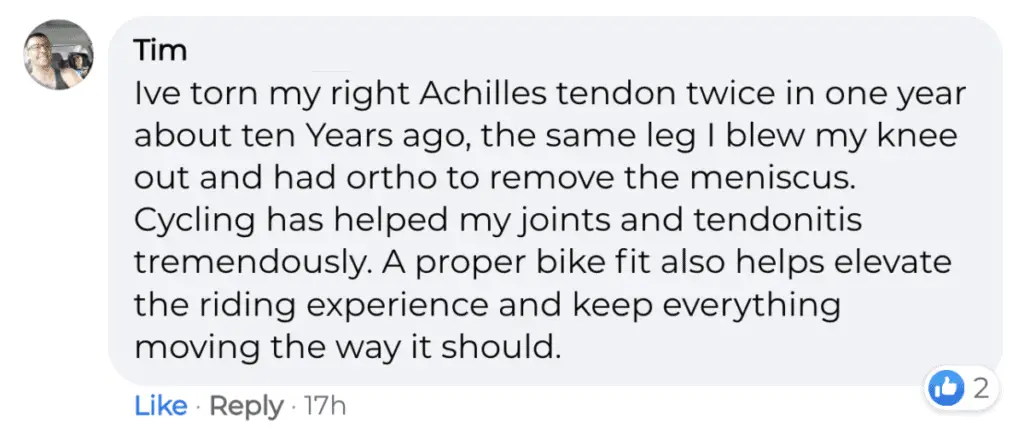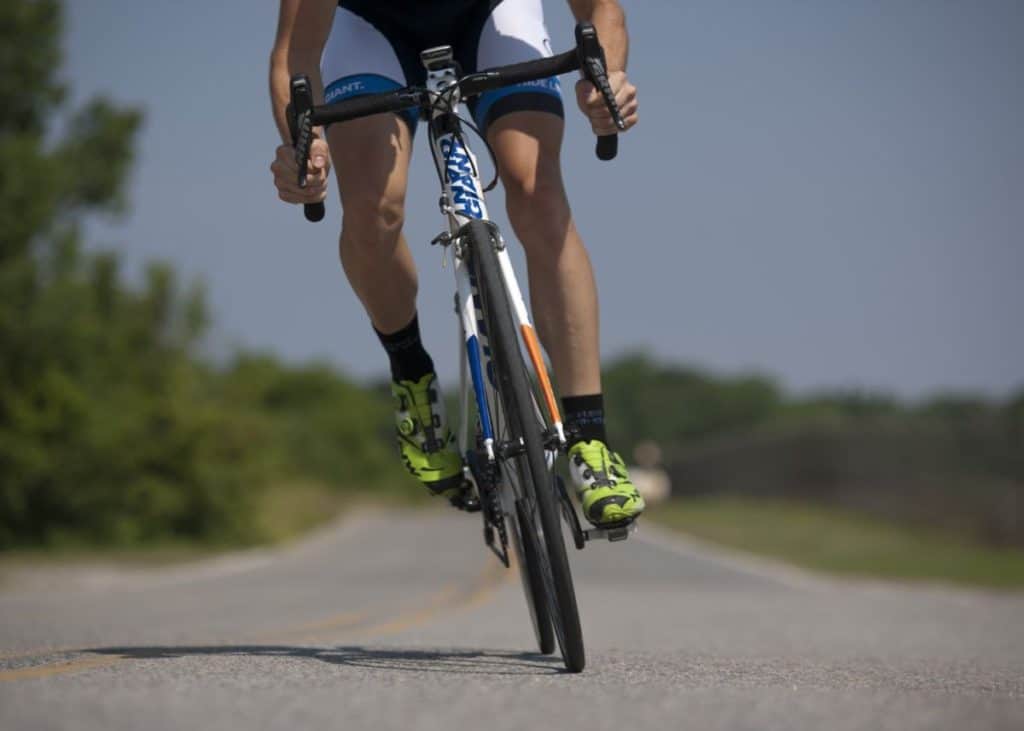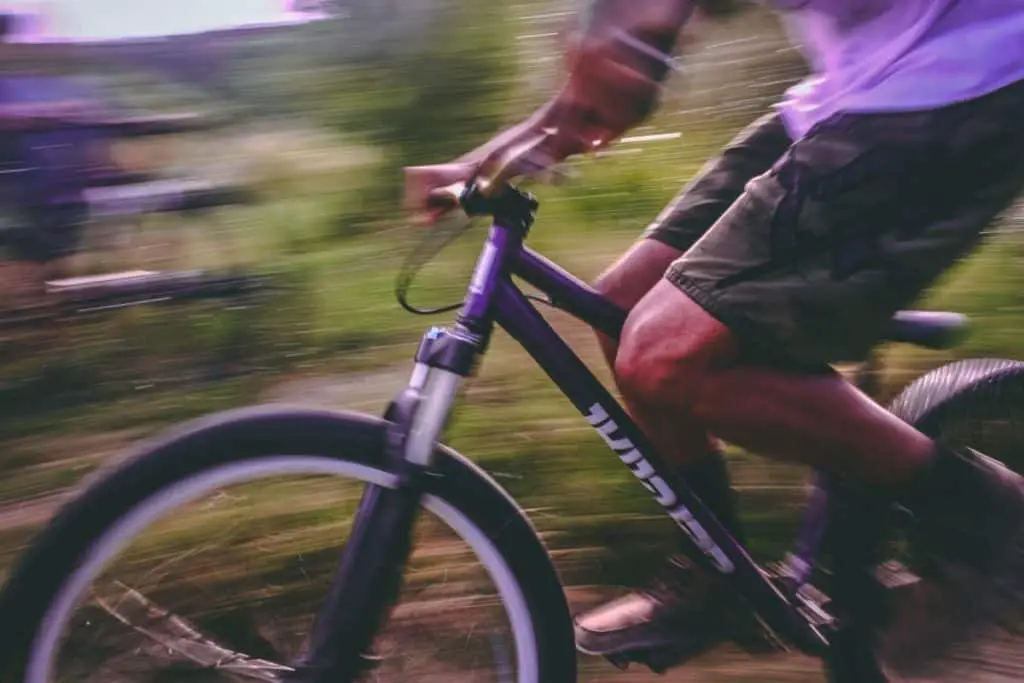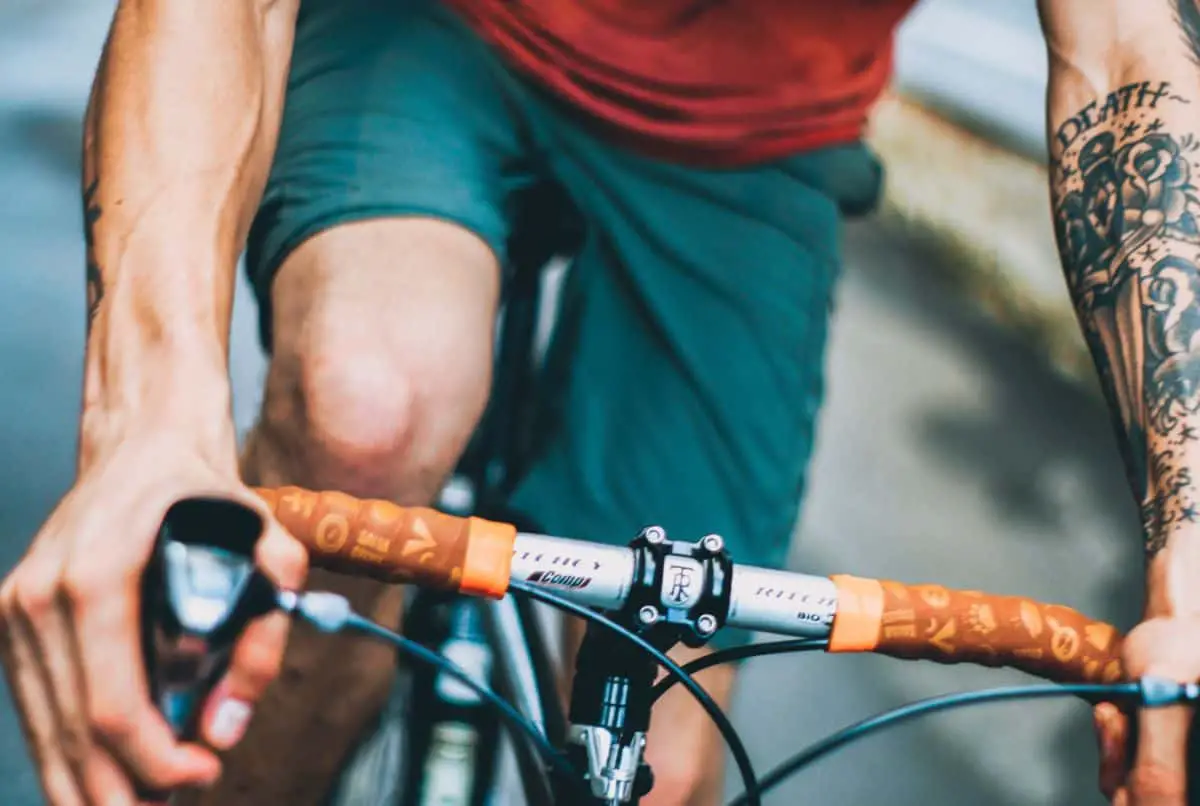If you are experiencing knee pain or had a recent injury, you’re probably wondering if it’s okay to ride a bike.
Cycling is very good exercise for people with knee pain because of the low-impact pedaling. The movement of pedaling a bike has a lower impact on the knees than running or walking. In fact, cycling is often prescribed as a rehabilitation method to strengthen joints and fix knee pain.
Factors that impact the effectiveness of cycling to help with knee pain include the location of pain, bike saddle height, and cycling duration. In this article, we’ll cover what you can do to ensure your knees don’t hurt while cycling, so keep reading!
We asked cyclists, “Does cycling help with your knee pain?”
We surveyed a group of cyclists asking if cycling has helped them with knee pain.
182 cyclists responded saying that cycling has been extremely effective in strengthening knees and fixing knee pain.







Why cycling is good for knee pain
Studies have shown that low-intensity cycling can be an effective way to reduce knee and joint pain. The low-impact movements of cycling can lubricate the joints without putting any added stress or weight on your knees, hips, and ankles. Cycling can also help alleviate the stiffness that is associated with knee and joint pain.
If you think about it, the movement of pedaling a bike has very little impact on the knees. By definition, cycling is a circular motion with no impact on the knees, as opposed to running or walking. Running and walking have an up-down motion that places the knees under greater stress.

“After knee surgery, my doctor recommended a recumbent bike to strengthen my quads. My knees are now pain-free.”
There is a common misconception that biking is bad for the knees because some people do experience knee pain after they start biking with improper bike fitting. Proper bike fitting is the single most important aspect of strengthening your knees through cycling, and avoiding developing pain.
Is cycling good for arthritic knees?
Cycling has shown to help arthritic knees due to the low-intensity and low-impact movement. The pedaling movement is ideal for strengthening joints and reducing stiffness.

“I have arthritis in both knees and cycling makes a world of difference. It keeps my legs flexible and mobile.”
Is cycling good for knee tendonitis?
Cycling may help knee tendonitis due to the low-intensity and low-impact movement. Sports that can cause symptoms of tendonitis are more high-impact activities, such as running, basketball, volleyball, soccer, etc.


How to bike without hurting your knees
It is important to keep in mind that your knee pain will not disappear completely on your first day of riding a bike. It may take some time and additional precautions for your knee pain to decrease as you transition into biking more regularly.
The good thing about cycling with knee pain is that you can control the intensity and pressure on your knees by following a few precautions. On the other hand, if you do not pay attention to how you bike, then it can cause unnecessary pain in your knees.
1. Choose a light-weight bike
Even the type of bike that you ride can have a positive or negative impact on your knees. It is recommended that those with knee or other joint pain ride a lighter-weight bike. Added weight on the bike will increase the weight that you have to move forward when accelerating and climbing up hills. A road bike is typically the lightest bike option available, as opposed to mountain bikes.
2. Use a lower gear
It is worth mentioning that if your knees are still in pain after you have transitioned to biking during your ride, you may want to double-check what gears you are using. Make sure you are using low-impact gears if you have knee pain, at least in the beginning.
3. Avoid riding up steep hills
If you aren’t able to get a lighter bike and maintain a lower gear for easier pedaling, then consider taking routes that have fewer hills. For most people, riding up hills cause more exertion from the legs and therefore more pressure on the knees.
Standing up while on the bike (riding out of the saddle) is particularly impactful on the knees, so be sure to remain seated while climbing long hills.
Fixing knee pain by location
After you have determined the location of your knee pain, you can address the issue and make adjustments as needed.
To fix front knee pain (anterior)
- Adjust the seat: Anterior knee pain usually results from the seat being too low and too far forward.
- Shorten the cranks: If the cranks are too long for the length of your legs, then the knee joints can become too tight, causing pain.
- Utilize foam rolling: Since anterior knee pain can often come from muscle tightness, using a muscle roller can help to loosen the muscles.
To fix back knee pain (posterior)
In contrast, back (posterior) knee pain usually comes from a seat that is too high and too far back. Adjusting the seat can be a huge help. Foam rolling can also help for posterior pain; focus on rolling out the hamstrings as opposed to the quadriceps. Icing may also provide relief.
To fix side knee pain (medial)
Cleat positioning, in addition to tight muscles, can be a major culprit for pain along the sides of the knee. The cleats should be set in a straight, neutral position so that they are directly under the ball of the foot.
Exercises that strengthen your core and glutes can help prevent your knees from overcompensating. Too much work for your knees can naturally be a huge cause of pain.

Set your bike seat properly to avoid knee pain
There are a few further precautions you can take to keep your knees more comfortable when biking to work:
- Have the correct height for your seat.
- If you have knee pain, try to minimize the amount of standing that you do on the bike.
- Minimize the amount of quick acceleration (sprinting)
Even though seat height is one of the easiest adjustments to make, it can be one of the most important. If your seat is too high or too low, it will be more strenuous on your knees. A good way to estimate how high your seat should be is by using the heel-to-pedal method.
Heel-to-pedal method (for a perfect seat height)
Simply lean your bike against a wall, sit on the seat, and place one of your feet to the lowest position that you can pedal. When your foot is positioned at the bottom and you are sitting on the seat, your knee should be straight.
When riding the bike, try to sit on the seat as much as possible to minimize the weight and pressure that is placed on your legs. It may be tempting to stand up and pedal when you are tired or have to go up a hill, but unnecessary weight on the knees can cause them to hurt.
If you ever have any questions or would like more suggestions, consider taking your bike to your local bicycle shop. A professional can help you even more in regards to your seat height, which gears to use, or can make recommendations based on your specific condition.
Read my full article on how to fix knee pain from biking here.
Should your legs be straight when riding a bike?
When riding a bike, it is important to know exactly how much bend there should be at the knees to ensure that knee pain does not occur. In addition, the proper bend will enable the most amount of power from your legs.
A rider’s legs should not be completely straight while riding a bike. The legs should have a slight bend at the knees in order to transfer the most power to the legs and avoid knee pain. Biking with legs completely straight means the bike seat is too high and can result in knee pain and inefficient pedaling.
If you find that yourself rocking back and forth at the hips while riding, it means the seat height is a bit too high and should be adjusted to a slightly lower position.
Using the above-mentioned heel-to-pedal method, try placing your heels on the pedal and adjusting the seat hight so that your legs are completely straight while your heels are on the pedals. Once you’ve adjusted your seat as such, you will then have a slight bend at the knees when pedaling normally.
Here’s a handy video from our good friends at GCN that demonstrates this heel-to-pedal method.
Cycling is one of the best things for your knees
Go ahead and hit the trailers or roads! Cycling has proven to be an excellent movement for healing and strengthening knee joins and muscles. The only thing you need to make sure you get right is your bike fitting. If you don’t get the saddle height on your bike just right, then you risk causing more pain and damage to your knees over time. But don’t worry, I’ve got you covered here. Just read this article on how to fix knee pain.
If you still need some convincing that biking is good for your knees, then be sure to read this article I wrote just for you.
My Recommended Gear for Year-Round Cycling on a Budget
It took me years of trial and error to figure out the best and most affordable setup for my daily bike commuting. I would only recommend the gear that is good quality for a good price. Here’s my full year-round gear recommendation guide.
Want to know how much your cycling gear should cost? Check out my guide with different budget options here.
Ride on!

